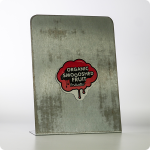Strange But True Facts about Magnets
A magnet is a material or object that produces a magnetic field. They are common in our everyday lives – more common than most of us realize. Yet despite the fact that we are surrounded by magnets, they remain fascinating and sometimes even mystifying. Here are a few strange, but true facts we know about magnets.
Fascinating Magnet Facts
1. Magnets Always Have Two Poles
Always. Even if you cut them in half. Yup, you can cut a magnet in half, and you will end up with two magnets, each with a north and south pole.
2. Not All Metals Are Magnetic
In fact, most metals aren’t magnet. Copper, silver, aluminum, platinum, magnesium and gold are not magnetic. Only certain types of metals such as nickel, steel, iron and cobalt have the necessary electron configuration, a property called ferromagnetism, that allows them to be strongly magnetic.
3. The Earth is a Magnet
Ok, you probably heard that one before, but did you know that the Earth’s magnetic field is what causes the aurora, or Northern and Southern Lights?
4. Not All Planets in our Solar System are Magnets
You may have already known the Earth was a magnet, but if you assumed all planets were, you’d have been wrong. Earth, Saturn, Jupiter, Neptune, and Uranus are the only planets in our solar system that have magnetic fields.
5. The Sun is Also a Magnet
The sun’s hot, churning plasma core generates a magnetic field that is much stronger and larger than earth’s. It’s responsible for solar phenomena like sunspots and solar flares. Its polarity also flips every 11 years.
6. Some Animals can Detect the Earth’s Magnetic Field
Even though the Earth’s magnetic field is invisible some birds, sea turtles, salmon and honeybees can sense it. It’s an ability called magnetoreception and it allows them to use the magnetic field like an internal compass for migration and finding their way home.
7. Magnets Can Repel Sharks
Recent studies have shown that strong Neodymium magnets can repel sharks by disrupting their electroreception, making them perceive areas as potentially dangerous and deterring them from entering.
8. Magnets were Discovered, Not Invented
The history of magnets dates back thousands of years to ancient Greeks and Chinese discovering naturally occurring magnetic rock called lodestones, an old English word meaning “way stone”. Scientists believe lodestone may be formed when lightning strikes magnetite, an iron ore. It is believed that the Chinese developed the first compasses by rubbing a needle against a lodestone.
9. You Are Probably Surrounded by Magnets Right Now
Magnets have a lot of different uses, some so common we don’t even think about them. They are found in items including cell phones, iPads, stereos, refrigerators and TVs. They store data on computers, float high-speed train cars to reduce friction on tracks. Some can even generate electricity.
10. Over 80% of Homes Have a Magnet on Their Fridge
It’s estimated that more than 80% of households have a magnet stuck to their kitchen refrigerator. The average fridge door is viewed 40 times a day, giving a single promotional magnet 14,000 impressions a year and over 100,000 impressions in its average five-to-ten-year lifespan.
Get the Right Magnet with US Magnetix
At US Magnetix, we’re here to help you with all your magnetic needs. We carry a variety of promotional magnets and industrial magnets and have years of experience and expertise to help you decide which magnetic product is right for you. Shop our online magnet store now or reach out to us online for help selecting the right magnet for your project.



